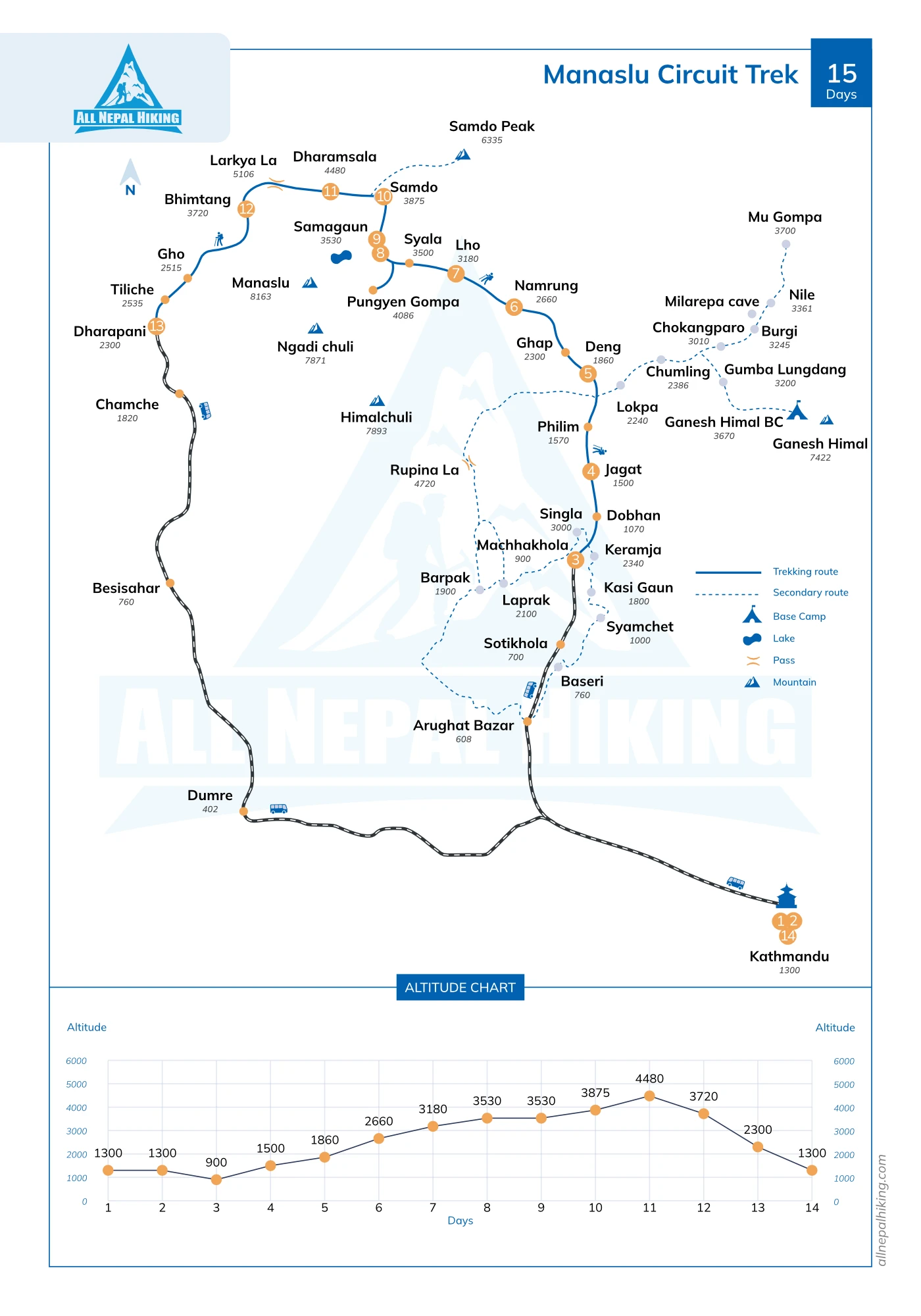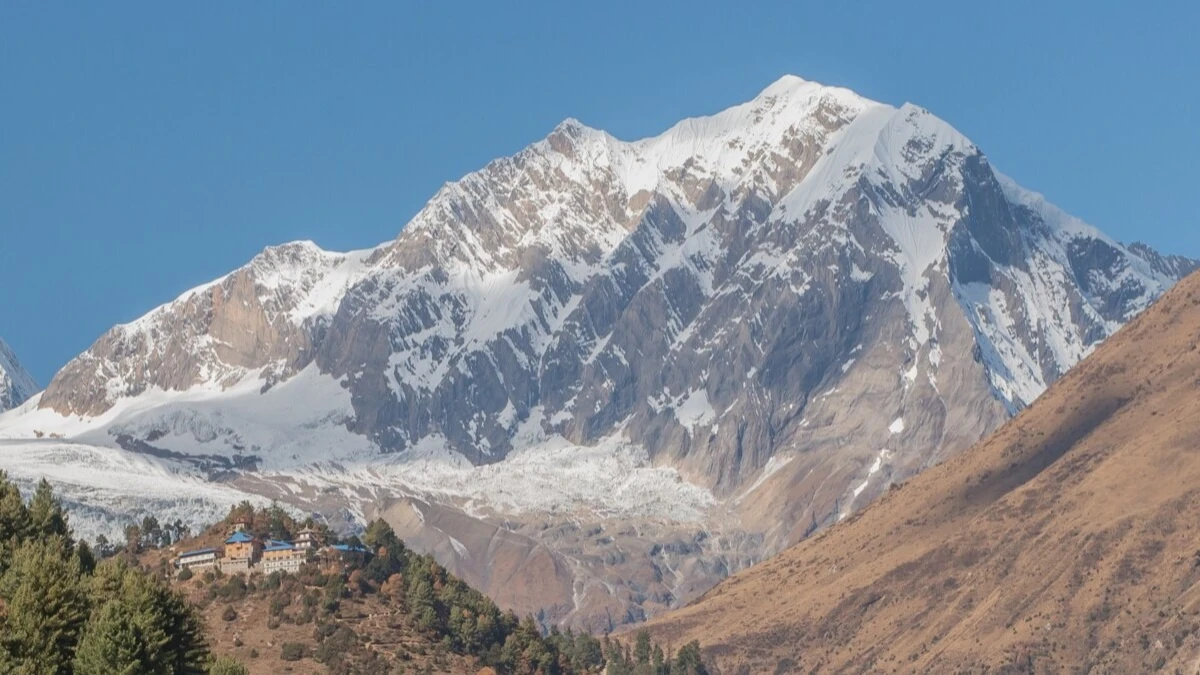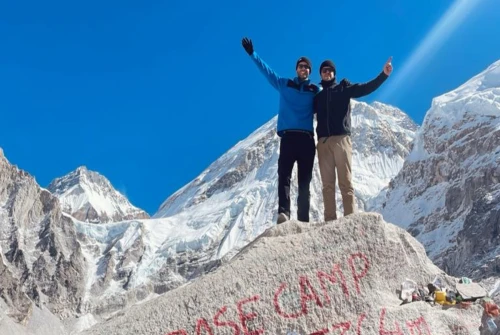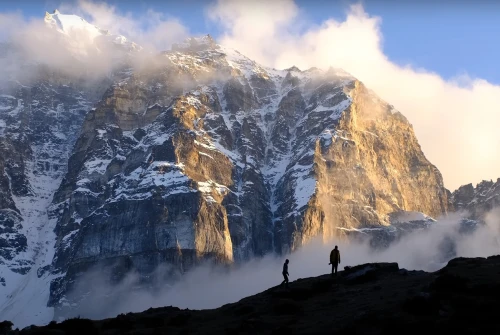What is the Manaslu Circuit Trek?
The Manaslu Circuit Trek is a popular trek in Nepal that circumnavigates Mount Manaslu, the eighth highest mountain in the world. The route offers stunning views of Himalayan peaks, remote villages, and diverse landscapes, including subtropical forests, alpine meadows, and glaciers. It’s a challenging trek, crossing the Larkya La Pass at an altitude of 5,160 meters. Ideal for experienced trekkers seeking adventure and solitude.
When is the best time to do the Manaslu Circuit Trek?
The best time to trek the Manaslu Circuit is during the spring (March to May) and autumn (September to November) seasons. During these periods, the weather is generally clear, and temperatures are mild. These months offer perfect trekking conditions with clear skies, beautiful views, and moderate weather. The summer monsoon (June to August) and winter (December to February) are less favorable due to rain and snow.
How difficult is the Manaslu Circuit Trek?
The Manaslu Circuit Trek is considered moderately to highly challenging due to its altitude, length, and remote nature. The trek involves steep ascents, high-altitude passes, and long days of walking. The Larkya La Pass can be especially difficult due to its altitude of 5,160 meters. Proper acclimatization and physical preparation are essential. Trekking experience is recommended for safety and enjoyment.
What is the highest point of the Manaslu Circuit Trek?
The highest point on the Manaslu Circuit Trek is the Larkya La Pass, at an altitude of 5,160 meters. This high-altitude crossing is one of the trek's most challenging sections. It offers incredible views of surrounding peaks like Manaslu, Himalchuli, and Ganesh Himal. Due to its altitude, trekkers must ensure proper acclimatization to reduce the risk of altitude sickness.
Do I need a permit for the Manaslu Circuit Trek?
Yes, trekkers need multiple permits for the Manaslu Circuit Trek. These include the Manaslu Restricted Area Permit (MRAP), the Annapurna Conservation Area Permit (ACAP), and the Trekkers’ Information Management System (TIMS) card. The MRAP is mandatory as the trek passes through a restricted area. Permits can be obtained in Kathmandu through registered trekking agencies.
How long does the Manaslu Circuit Trek take?
The Manaslu Circuit Trek typically takes 12 to 16 days depending on your pace and acclimatization. The trek usually starts from Soti Khola and ends in Besisahar or Arughat, covering approximately 177 kilometers. The duration can vary based on weather, group size, and rest days for acclimatization at higher altitudes.
What is the total distance of the Manaslu Circuit Trek?
The Manaslu Circuit Trek covers a total distance of around 177 kilometers (110 miles). The trail weaves through various terrains, including subtropical forests, alpine meadows, and high-altitude landscapes. Despite the long distance, the trek is mostly moderate in terms of daily distances, but the altitude challenges trekkers to adjust their pace accordingly.
Can I trek the Manaslu Circuit independently?
As of now, trekkers are required to do the Manaslu Circuit Trek with a registered guide and porter. The trek passes through a restricted area, and solo trekking is not allowed. You must hire a guide or join a group tour. This is to ensure safety and proper management of permits.
What type of accommodation is available on the Manaslu Circuit Trek?
Accommodation on the Manaslu Circuit Trek is generally in teahouses (local guesthouses) along the route. The teahouses offer basic facilities, including a bed, blanket, and food. The rooms are simple, and shared bathrooms are common. The higher you go, the more basic the accommodation becomes, but the warmth of the hosts makes up for it.
Is the Manaslu Circuit Trek safe?
The Manaslu Circuit Trek is relatively safe, but it does present challenges due to high altitude and difficult terrain. Accidents are rare, but altitude sickness is a risk. It’s crucial to trek with a guide who is familiar with the terrain and altitude management. It’s also important to carry proper gear, stay hydrated, and acclimatize properly.
What is the food like on the Manaslu Circuit Trek?
The food on the Manaslu Circuit Trek mainly consists of Nepali and Tibetan-style dishes, including dal bhat (lentil soup), momo (dumplings), and noodle soups. Higher up, the variety decreases, but you can still find basics like rice, potatoes, and pancakes. Western-style options like pasta and pizza are available in some teahouses.
How do I prepare for the Manaslu Circuit Trek?
Preparation for the Manaslu Circuit Trek involves physical conditioning, acclimatization, and proper gear. Cardio and strength training are essential for endurance. You should gradually increase your stamina with longer hikes. Mental preparation is equally important for the challenging altitude. Ensure you have the correct trekking gear such as waterproof boots, jackets, and a first aid kit.
What is the risk of altitude sickness on the Manaslu Circuit Trek?
Altitude sickness is a concern for trekkers on the Manaslu Circuit as the trek reaches high altitudes, especially at Larkya La Pass. Symptoms include headache, dizziness, nausea, and fatigue. To prevent it, follow a slow ascent, stay hydrated, and take rest days for acclimatization. If symptoms worsen, descend immediately.
What is the weather like on the Manaslu Circuit Trek?
The weather varies along the Manaslu Circuit Trek, with warmer temperatures in the lower regions and colder conditions at higher altitudes. During the spring and autumn, the weather is typically clear, sunny, and dry. The higher you trek, the colder it gets, especially in the evenings. In winter, snow can block some paths.
Can I use a credit card on the Manaslu Circuit Trek?
Most teahouses and shops on the Manaslu Circuit do not accept credit cards. Cash, typically in Nepali rupees, is necessary for purchasing food, drinks, and souvenirs. It's advisable to carry enough cash from Soti Khola or Arughat as you may find limited ATMs along the route.
What is the trek's difficulty level compared to other Nepal treks?
The Manaslu Circuit is more difficult than popular treks like the Annapurna Circuit or Everest Base Camp trek due to its higher altitude and remoteness. The Larkya La Pass is a significant challenge, and the trek is less crowded, which can make navigation and communication more difficult. However, the rewards of solitude and pristine views are worth the effort.
Can I get internet access on the Manaslu Circuit Trek?
Internet access is available at some teahouses along the Manaslu Circuit, but the quality can be slow and intermittent. In lower areas, Wi-Fi is more accessible, but as you ascend, it may be limited or unavailable. You can also buy a local SIM card in Kathmandu for data use.
Are there any cultural highlights on the Manaslu Circuit Trek?
The Manaslu Circuit offers rich cultural experiences, especially in villages like Samagaon and Tsum Valley. You can visit ancient monasteries, interact with the Tibetan Buddhist community, and witness traditional life. The trek offers insight into the local Gurung and Tibetan cultures, and you’ll experience their religious ceremonies, festivals, and customs.
What kind of wildlife can I see on the Manaslu Circuit Trek?
The Manaslu Circuit Trek is home to various wildlife species. In the lower regions, you may spot animals like the Himalayan tahr, langur monkeys, and musk deer. As you climb higher, you'll encounter species adapted to cold climates, including the snow leopard and blue sheep. The area is also rich in birdlife, including pheasants.
Is it possible to trek the Manaslu Circuit with children?
While it’s possible to trek the Manaslu Circuit with children, it’s not recommended for young ones due to the challenging nature of the route, including long distances, altitude, and cold weather. Older children in good physical condition might manage, but careful planning and additional rest days are essential for acclimatization and safety.
What should I pack for the Manaslu Circuit Trek?
Essential items to pack for the Manaslu Circuit Trek include trekking boots, a sleeping bag, warm clothing, a waterproof jacket, trekking poles, sunscreen, a first aid kit, and headlamp. Don't forget to carry personal hygiene items, snacks, and a camera. Properly layered clothing is essential for varying temperatures.
How do I get to the starting point of the Manaslu Circuit Trek?
The trek begins at Soti Khola or machhe khola which is accessible from Kathmandu by a private jeep or public bus. The journey takes around 8 to 10 hours, depending on road conditions. Alternatively, you can take a bus to Arughat and then continue by jeep or on foot to Soti Khola.
Are there any dangers on the Manaslu Circuit Trek?
The major risks on the Manaslu Circuit Trek are related to altitude sickness, weather changes, and the difficult terrain. Landslides can occur, especially during the monsoon. Additionally, the high-altitude pass requires careful acclimatization to prevent serious health issues. It’s essential to stay aware of these risks and follow safety measures.
What is the Larkya La Pass like?
The Larkya La Pass is one of the highest and most challenging parts of the Manaslu Circuit Trek. Located at 5,160 meters, it involves a steep ascent, often covered in snow, with stunning views of Himalayan peaks. The pass is physically demanding, and proper acclimatization is crucial.
How is the local culture along the Manaslu Circuit?
The local culture along the Manaslu Circuit is heavily influenced by Tibetan Buddhism. You’ll encounter Buddhist monasteries, prayer flags, mani walls, and local customs that reflect the spiritual life of the people. The Tsum Valley is particularly rich in cultural heritage, with strong Tibetan influence.
What are the major risks of altitude sickness on the Manaslu Circuit?
The primary risk of altitude sickness on the Manaslu Circuit is related to the high-altitude pass, Larkya La. The symptoms include dizziness, headache, nausea, and shortness of breath. To prevent it, make sure to acclimatize properly, stay hydrated, and avoid pushing your limits too hard.
Can I trek the Manaslu Circuit alone?
Solo trekking is not allowed on the Manaslu Circuit due to its restricted area status. You must trek with a licensed guide and porter. Solo trekkers are not permitted to enter the area without official arrangements to ensure safety and proper permit compliance.
How do I arrange a trek for the Manaslu Circuit?
To arrange a trek for the Manaslu Circuit, you’ll need to book through a licensed trekking agency in Kathmandu. They will help with permits, accommodations, and guide/porter services. It's best to plan in advance, especially during peak seasons.
What wildlife can I see on the Manaslu Circuit Trek?
The Manaslu Circuit Trek is home to a range of wildlife including the Himalayan tahr, snow leopards, blue sheep, and langur monkeys. In higher altitudes, trekkers might spot rare species such as the red panda. The area is also known for its diverse birdlife.
Can I extend my trek into the Tsum Valley?
Yes, you can easily extend your trek to the Tsum Valley, a culturally rich area with Tibetan influences. The extension adds a few days to your journey, taking you through remote villages, monasteries, and valleys. It’s a peaceful detour with spectacular scenery.
How should I prepare physically for the 15-Day Manaslu Circuit Trek?
Preparing for the Manaslu Circuit Trek requires building endurance and strength. Focus on cardio exercises, such as hiking or running, and work on leg strength through squats and lunges. Aim for long-distance hikes with a weighted backpack to simulate trekking conditions. Acclimatization is key, so practice hiking at high altitudes if possible.
What fitness level is required for the 15-Day Manaslu Circuit Trek?
The Manaslu Circuit Trek is moderately difficult, requiring a good fitness level. Endurance is critical, as you'll be trekking for up to 8 hours a day, crossing high-altitude passes. It's essential to be in good physical shape, with previous trekking experience being highly recommended.
How much do the permits cost for the Manaslu Circuit Trek?
The cost of permits varies based on the trekking season and nationality. Generally, the Manaslu Restricted Area Permit costs around USD 100 per week for the first week and USD 15 per day for additional days. ACAP and TIMS permits are generally USD 20 and USD 10, respectively.
Do I need travel insurance for the Manaslu Circuit Trek?
Yes, travel insurance is essential for the Manaslu Circuit Trek. It should cover emergency evacuation, medical treatment, and trekking at high altitudes. It’s also important to have insurance that covers trip cancellation and lost luggage. Confirm that your insurance policy covers activities at 5,000 meters or higher.
Will my standard travel insurance cover trekking in Nepal?
Standard travel insurance often doesn't cover high-altitude trekking. You must opt for a specific trekking insurance that includes coverage for high-altitude treks like the Manaslu Circuit Trek, which reaches above 5,000 meters. Always read the fine print to ensure you’re covered for the duration and type of activity.
What kind of support staff will I need for the trek?
For the Manaslu Circuit Trek, you’ll likely need a guide and a porter. The guide ensures navigation, safety, and permits, while the porter will carry your luggage, reducing the strain on your body. Having both staff makes the trek safer and more comfortable.
Are there hot showers on the Manaslu Circuit Trek?
Hot showers are available in most teahouses along the Manaslu Circuit, but they often come with an additional cost. However, the higher you ascend, the more limited the facilities become. You may need to use a bucket shower or do without hot water in remote areas.
Is it safe to drink water on the Manaslu Circuit Trek?
The water from streams along the Manaslu Circuit should be treated before drinking. Carry water purification tablets, or use a water filter to ensure it’s safe. In teahouses, you can buy bottled water, but it's best to minimize plastic use by bringing your own purification method.
How cold does it get on the Manaslu Circuit Trek?
The Manaslu Circuit Trek experiences cold temperatures, especially at higher altitudes. In lower regions (600m-2,500m), temperatures range from 5°C to 18°C (41°F to 64°F) during the day, dropping to 0°C to 5°C (32°F to 41°F) at night. As you ascend (3,500m-4,500m), daytime temperatures range from 3°C to 8°C (37°F to 46°F), with nights dropping to -5°C to -10°C (23°F to 14°F). At the Larkya La Pass (5,160m), temperatures can drop to -10°C to -15°C (14°F to 5°F). It's important to prepare with proper cold-weather gear.
What should I do in case of an emergency on the trek?
In case of an emergency, contact your guide or support staff immediately. If necessary, emergency evacuation can be arranged through your insurance provider or local services. It’s important to have a satellite phone or access to communication facilities in remote areas.
What gear should I bring for the Manaslu Circuit Trek?
Essential gear for the Manaslu Circuit Trek includes trekking boots, warm clothing, a sleeping bag, trekking poles, and a rain jacket. Don't forget a first aid kit, sunscreen, headlamp, and a water purification system. Proper layering is crucial for varying temperatures.
Can I rent trekking gear in Kathmandu for the Manaslu Circuit?
Yes, you can rent trekking gear such as boots, jackets, and sleeping bags in Kathmandu. Many shops offer affordable rentals for essential trekking equipment. However, it’s recommended to bring your own for better comfort and quality, especially for high-altitude trekking.
How can I book the Manaslu Circuit Trek?
You can book the Manaslu Circuit Trek through a trekking agency in Kathmandu. They will arrange permits, guides, porters, and accommodation. It's advisable to book in advance, especially during peak seasons. Agencies can provide customized itineraries depending on your preferences.
What payment methods are accepted for the Manaslu Circuit Trek?
Most trekking agencies in Kathmandu accept cash (in Nepali rupees) and bank transfers. Some agencies may accept credit cards, but it’s best to confirm in advance. For personal expenses along the trek, carry cash as credit cards are generally not accepted on the trail.
Are there flights to the Manaslu Circuit start point?
There are no direct flights to the start of the Manaslu Circuit Trek. The nearest airport is in Pokhara, but you’ll still need to take a bus or jeep from Pokhara or Kathmandu to reach Soti Khola, where the trek begins.
Conclusion:
The 15-Day Manaslu Circuit Trek is a challenging yet immensely rewarding adventure that immerses trekkers in the stunning beauty of the Himalayas, the rich culture of remote mountain communities, and the thrill of high-altitude trekking. Whether you’re drawn to the majestic views of Manaslu, the spiritual atmosphere of Tibetan monasteries, or the sense of accomplishment from crossing Larkya La Pass, this trek has something special to offer.
With proper preparation, a well-thought-out packing list, and attention to health and safety precautions, you can ensure a successful journey. Understanding the importance of obtaining the necessary permits, arranging for guides and support staff, and having the right insurance will make your trek smoother and safer.
So, if you're ready to challenge yourself, embrace the beauty of Nepal’s remote regions, and experience a trek like no other, the Manaslu Circuit will undoubtedly be a highlight of your Himalayan adventures. Plan well, stay safe, and enjoy every step of the way



.webp)

